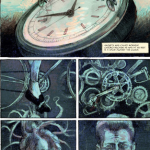Listen to Episode 50: Filing Solo
In this Episode:
Frankie joins The Bartender to talk about when she first realized that maybe you shouldn’t answer the door when you live alone. Even if it’s the lead paint inspector. Then Liz tells a very touching story about what she learned from her first love. It also involves a filing cabinet.
PLUS listener shout outs and news about the next Tell The Bartender LIVE! Like the show? Tip The Bartender! Or give it 5 stars!
Frankie Mace is an incredible sommelier, restaurant manager and person. Here she is showing off some sweet skills in a photo for the Wall Street Journal:
Liz Miele is an amazing comedian, writer, tweeter, and has a new comedy album you all should buy here, here and here. This is her just hanging out being awesome:
Watch some of her comedy here!
Music Credits:
“Setting Sun” by Chris Powers
“Intergalactic” by Beastie Boys
“She’s So High” by Blur
“Lloyd, I’m Ready To Be Heartbroken” by Camera Obscura
“Deceptacon” by Le Tigre
“Bottled in Cork” by Ted Leo & The Pharmacists
Source: Tell The Bartender
http://tellthebartender.com/2015/01/04/episode-50-filing-solo/









